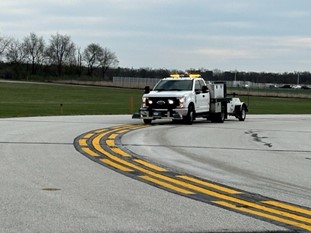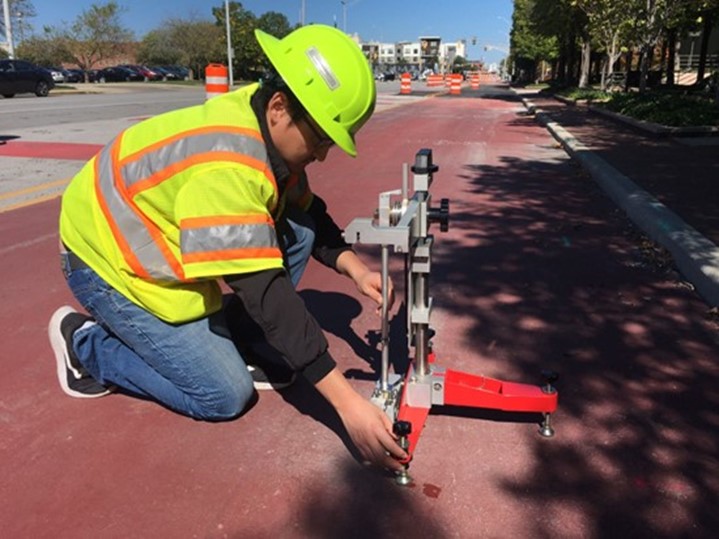Seamless Coverage of INDOT Friction Test System
|
1. Friction characteristics on highway horizontal curves.
2. Friction testing on pavement markings at crash sites.
3. Friction performance of Color Surface Treatment.
The research encompasses a thorough evaluation of the aggregates commonly used in Indiana through laboratory experiments, field tests, and data analysis to unveil their influence on pavement friction. It also involves extensive laboratory testing, evaluation, and analysis of various pavement marking materials to gauge their friction performance. Field measurements of friction features on colored bus and bike lanes are conducted, and the obtained data is thoroughly analyzed. Moreover, pavement frictions on horizontal curves are assessed on airport runways and highway sections. Also investigated is the tire-pavement interaction on roadway curves for friction testing equipment through mechanistic-empirical analysis. Building on the established tire-pavement interaction relationship, a friction testing model for horizontal curves is devised using cutting-edge finite element analysis and machine learning methodologies. In summary, this research endeavors to provide a holistic solution to the challenges posed by changing industry landscapes, emphasizing the critical importance of friction in ensuring road safety, and advancing the current INDOT friction testing program to meet these evolving demands effectively. |
|
|
|
|
|
For more information, see the full Technical Report: Bao, J., Hu, X., Peng, C., Duan, J., Lin, Y., Tao, C., Jiang, Y., & Li, S. (2024). Advancing INDOT’s friction test program for seamless coverage of system: Pavement markings, typical aggregates, color surface treatment, and horizontal curves (Joint Transportation Research Program Publication No. FHWA/IN/JTRP-2024/09). West Lafayette, IN: Purdue University. https://doi.org/10.5703/1288284317734 |
|

